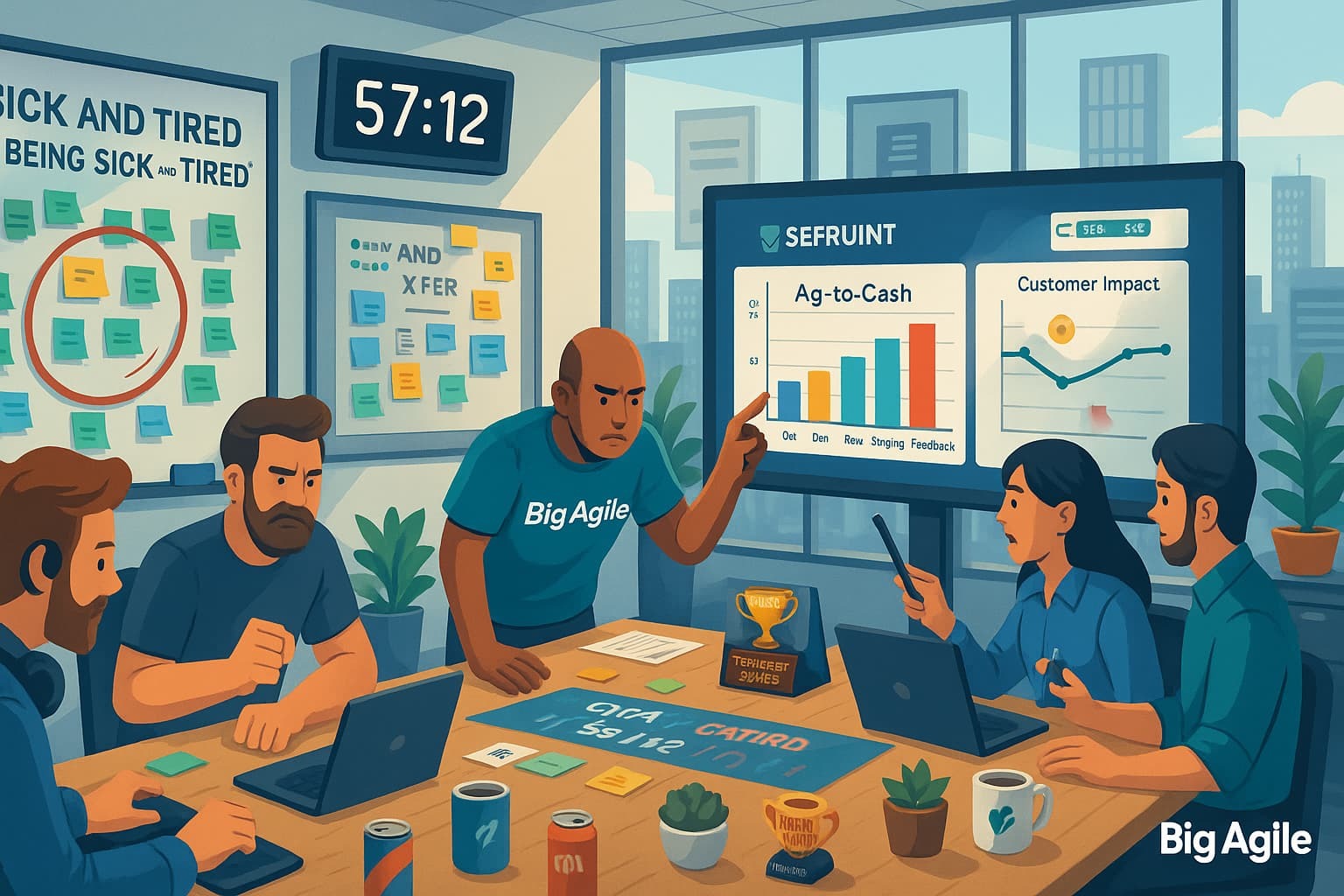
Did You Know?
A 2023 American Psychological Association press release summarized a Texas A&M study that found anger reliably boosts goal achievement, especially when the task is challenging but still achievable.
Researchers showed that anger increases effort, focus, and persistence. Heather Lench, the study’s lead author, calls this type of anger’ directional anger’: “Anger signals we care and pushes us to act.” That same spark lies at the core of Dave Ramsey’s famous mantra:
“I got sick and tired of being sick and tired.”
When frustration peaks, people stop tolerating mediocre results and start taking action. If you are human, I know you have felt this sometime in your life.
So what?
Agile teams experience a similar feeling of urgency when sprint after sprint is slowed by tech debt, flaky tests, or stakeholder indecision. Kotter warns that change efforts stall without a clear sense of urgency; people can “find a thousand ingenious ways to withhold cooperation” if they don’t feel the heat. Meanwhile, Prosci’s ADKAR model reminds us that desire, the personal motivation to change, comes only after individuals recognize the need. Directional anger transforms worry into that vital sense of urgency and passion, driving backlog reduction, tech debt repayment, and process improvements.
Now What?
“Get mad. Then get methodical.”
Below is a quick action loop Agile teams can weave into retros, swarms, or Kaizen moments:
- Identify the Trigger
During retro, ask: “Which blocker makes you sick and tired every single sprint?” - Channel the Energy
Convert the gripe into a single improvement story (Definition of Done = impediment removed). - Time-box the Attack
Use a 60-minute mob-coding or process-mapping burst—act before the emotional charge fades. - Measure the Win
Track the delta: lead-time reduced, failed builds cut, stakeholder rework eliminated. - Reinforce & Repeat
Celebrate publicly; then schedule the next anger audit so urgency stays fresh.
Kick-off for Leaders & Scrum Masters: adopting this loop turns raw frustration into continuous-improvement fuel, much like Ramsey turns money stress into disciplined budgeting.
Next time your team feels the fire, pause the hand-wringing, focus the fury, and aim it at one concrete obstacle.
Catalyst Leadership Questions
Next time with your team, pose these and dig deeper:
| Question | Probing Prompt |
|---|---|
| Where are we “sick and tired” in our flow right now? | Which blocker sparks the strongest emotion each sprint? |
| What outcome would removing that pain deliver? | How would cycle-time, quality, or morale visibly improve? |
| Which small, time-boxed experiment could we run this week? | Who owns it and how will we know it worked? |
| How will we keep urgency alive after the first win? | What reinforcement ritual or metric will we track? |
| What support do we need from leadership or partners? | Which policy, tool, or resource unlocks faster progress? |
Anger isn’t the villain, aimless anger is. Treat directional anger as the flint that sparks change: it lights the path from tech-debt purgatory to high-flow nirvana. Just like Ramsey-style money makeovers begin with a frustrated “Enough!,” Agile breakthroughs start the moment a team refuses to tolerate the status quo.
Cue the timer, focus the fury, and watch velocity and morale ignite!